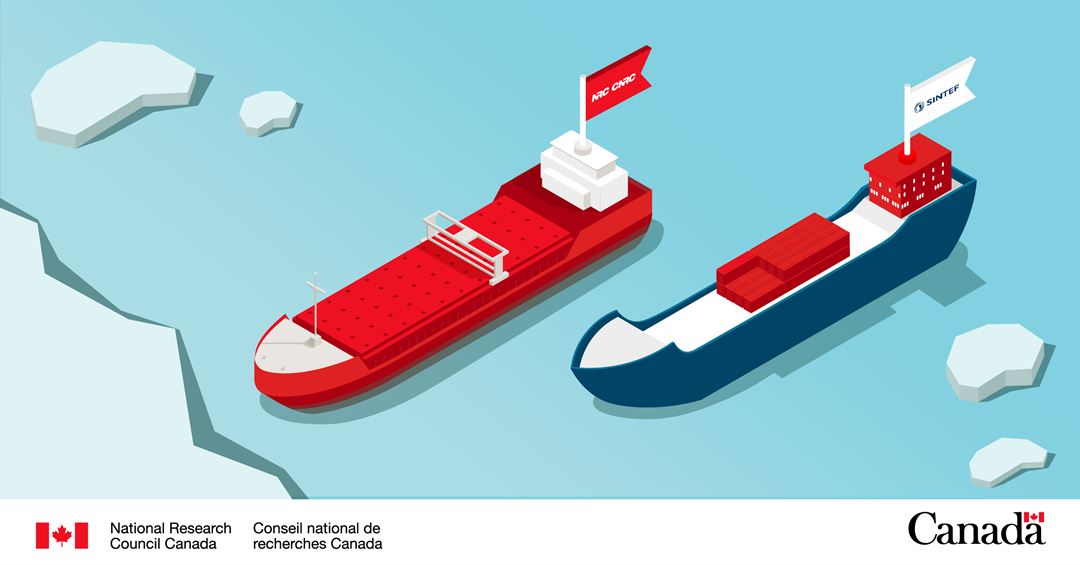In their remarks, Dr. David Murrin, Director General of NRC’s Ocean, Coastal and River Engineering Research Centre, and Vegar Johansen, CEO of SINTEF Ocean, highlighted the importance and value of this collaboration between Canada and Norway. They were joined by Norway’s Ambassador to Canada, His Excellency Jon Elvedal Fredriksen, and Canada’s Ambassador to Norway, His Excellency Patrick Parisot.
"Today, I am pleased to say that the Norwegian and Canadian partnership also continues to grow on the institutional level and that we continue to work together to advance the ocean agenda", said Ambassador Fredriksen.
The NRC’s Ocean, Coastal and River Engineering Research Centre brings to this partnership its expertise in novel, resilient and adaptive engineering solutions in harsh and freshwater environments, as well as in climate resilience and adaptation research. SINTEF operates some of the world’s most advanced marine and biomarine laboratories and conducts research and innovation within maritime and offshore oil and gas, renewable energy, aquaculture, fisheries, biomarine and marine environmental technology.
This new agreement will not only build on and strengthen both organisations’ research and innovation in ocean engineering, but it also strengthens Canada and Norway’s existing relationship in terms of science, research, and development.
As stated by Ambassador Parisot, “both the NRC’s Ocean, Coastal and River Engineering Research Centre and SINTEF Ocean will be stronger because of [this collaboration agreement], and now the suite of offering will provide even more value to clients moving forward”.
“Today is a great day for the NRC and SINTEF and a great example of two organisations coming together on common goals”, said Dr. Murrin. “Given the strength of our organisations, this colaboration will enhance the stature of Canada and Norway as global hubs for research and innovation in the field of Ocean engineering. We have been working on this for a while and I am very optimistic about the opportunity that we have in front of us”.
The NRC and SINTEF first worked together in 2015, on a project studying oil-degrading marine bacteria. The success of this project led to this agreement to tackle common challenges and seize new opportunities in the ocean engineering sector. Renewable energy, oil spill contingency, automation in ice and harsh environment and machine learning are only a few examples of upcoming collaboration areas.
“The NRC and SINTEF Ocean are two like-minded organisations with regards to ocean engineering and marine technology, R&D, and innovation”, added Dr. Johansen. “We serve both industry and society including R&D education and public policy. We have complementary expertise and competences which, when combined, offer a unique opportunity and possibilities to both industry and research”.
At the event, researchers from both organisations delivered technical presentations. NRC researchers presented their work on icebreaker model testing, vessel efficiency and numerical modelling, while SINTEF experts shared their knowledge on wave impact measurement, climate adaptation and vortex-induced vibrations.
There may be an ocean between Norway and Canada, but we are confident that this new partnership will benefit both organisations, leading to joint industry projects within the field of ocean engineering, increased research and development, improved knowledge and optimised research and testing techniques and processes.
Norway and Canada first established their diplomatic relations in 1942. Since then, the two countries have worked together as multilateral and bilateral partners, and allies on many global initiatives, such as environmental protection, climate change, and more.
This article was originally written and published by the National Research Council of Canada.


